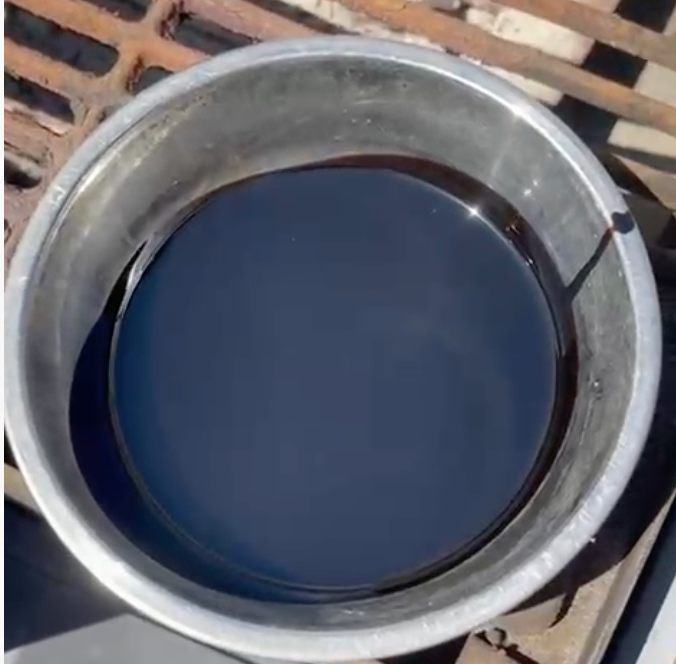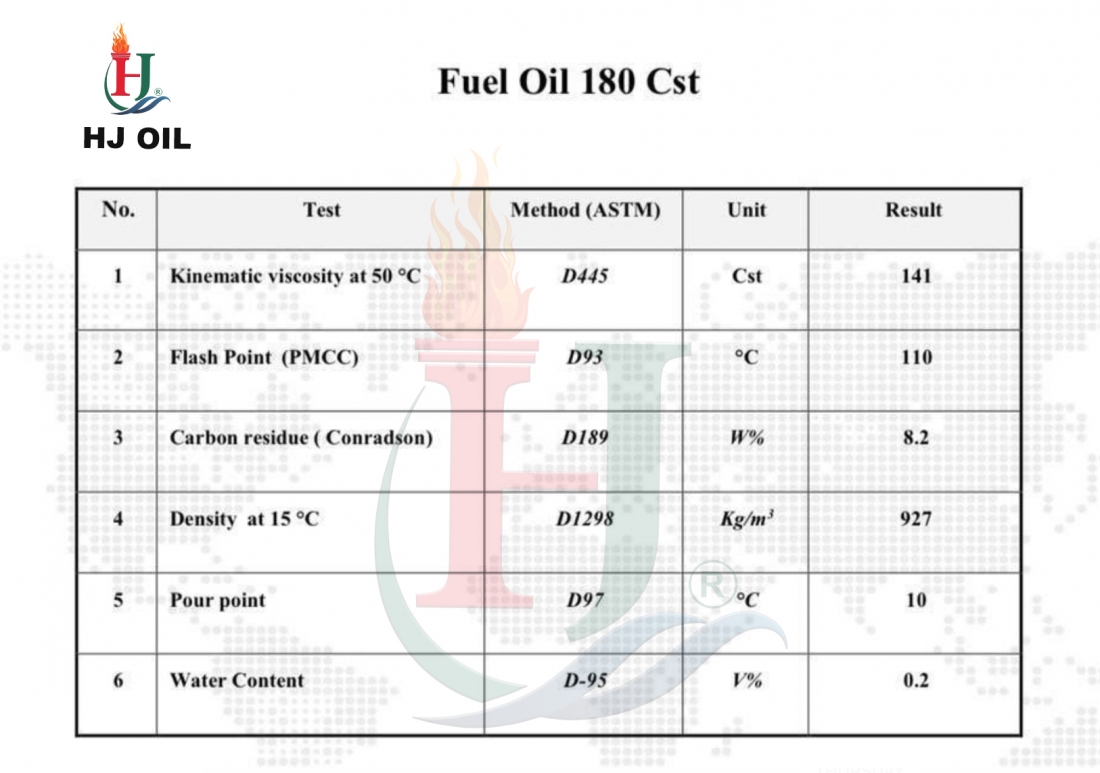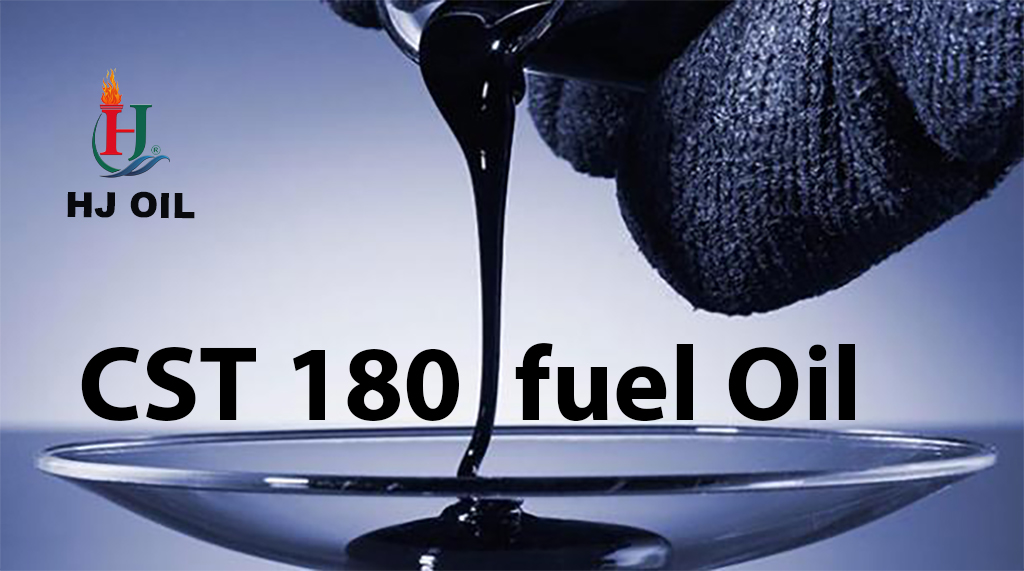Heavy Fuel Oil (HFO)
HJ Oil is a leading supplier of heavy fuel oil (HFO) with a strong presence in the global energy market. The company specializes in the production, distribution, and marketing of HFO products, catering to various industries and clients worldwide.
Production Facilities:
HJ Oil operates state-of-the-art production facilities strategically located in key regions, including East Asia, the Middle East and Oceania.Vietnam,Cambodia, Laos,Myanmar,pakistan,India These facilities are equipped with advanced refining technologies and adhere to strict quality control standards to ensure the production of high-quality HFO products.
Product Range:
HJ Oil offers a comprehensive range of HFO products tailored to meet the diverse needs of its customers. This includes various grades of HFO suitable for power generation, heating applications, and marine propulsion.
Distribution Network:
With a robust distribution network, HJ Oil efficiently delivers its HFO products to clients across East Asia, the Middle East, and other global markets. The company's logistics capabilities ensure timely and reliable supply chain management, meeting customer requirements effectively.
Commitment to Sustainability:
HJ Oil is committed to environmental sustainability and continuously invests in technologies and practices that minimize the environmental impact of its operations. This includes efforts to reduce emissions, promote energy efficiency, and explore cleaner fuel alternatives.
 Industry Leadership:
Industry Leadership:
As a recognized leader in the HFO industry, HJ Oil maintains strong relationships with industry partners, regulatory bodies, and stakeholders. The company actively participates in industry initiatives and adheres to international standards and regulations governing the energy sector.
Future Outlook:
Looking ahead, HJ Oil remains focused on innovation, sustainability, and customer satisfaction. The company aims to expand its market presence, develop eco-friendly solutions, and remain at the forefront of the evolving energy landscape.
Heavy Fuel Oil (HFO) is the residual product that remains after refining the crude oil. HFO is used in heaters, boilers, furnaces, kilns and power generators. On a technical level, HFO, which is often referred to as “refinery residual,” is a complex group of hydrocarbon products that consist of the highly viscous and tar-like residues of the crude oil refining process. Not all HFO is chemically uniform as its components are present in varying percentages depending on the crude oil from which the residuals have been derived as well as the nature of any other products (including diesel) added in order to improve pumping/flow, handling and combustion,or reduce the sulphur content of the Fuel (a technique known as blending).
The Combustion of HFO produces high levels of pollutants such as particulate matter, black carbon, sulphur oxide, nitrogen oxide, which have been linked to an increased risk of heart and lung disease as well as pre-mature death. Black carbon is also a critical contributor to human-induced climate warming, especially in the Arctic. As a residual product, HFO is a relatively inexpensive fuel – it typically costs 30% less than distillate fuels (MDO/MGO) (Verlinkung). It thus became the standard fuel for large marine diesel engines during the oil crisis in the 1970s and 1980s, and it required extensive adaptation of the injection system and other components of low and medium speed engines – which are still the only reciprocating engines capable of running on HFO. HFO is used as a marine engine fuel because of its cheapness, but it does contain a lot of impurities and must be kept at a high temperature both during storage and use in ships main engines.
Properties of Heavy Fuel Oil Used In Marine Diesel Engines
The major properties of heavy fuel oil are as follows;
1. Density:
Density is the relationship between mass and volume at a stated temperature, and the SI unit is Kg/m3. This gives value of 800- 1010 kg/m3 for marine heavy fuel oil.
The density of HFO is limited to 991kg/m3 to facilitate efficient centrifuging. (Centrifuges use centrifugal force to separate water from HFO, so the bigger the difference in density the greater removal of water ). However the density of HFO can be been increased to 1010kg/m3 if clarifiers are used, as water seal can be maintained during clarification. Any higher density than this will inhibit HFO water removal treatment through centrifuging.
2. Viscosity.
Viscosity is a measurement of the resistant of a liquid to shear or flow and is measured in Centistokes (CST) with a quoted reference temperature. Knowing the viscosity of the heavy fuel oil is required the temperature range required for satisfactory injection at the fuel atomizer, and efficient combustion.
3. Flash Point
The flash point of the liquid is the lowest temperature at which sufficient vapor is given to produce a flash on application of a flame under specified test conditions.
The minimum flash point for marine fuels in the machinery space of merchant ship is governed by the IMO; being set at 60o C to minimize fire risk during normal storage and handling.
4. Pour point.
The pour point is the lowest temperature at which a marine fuel oil can be handled without excessive amounts of wax crystals forming out of solution. At a lower temperature the fuel will gel, thereby preventing flow.
5. Carbon Residue.
The carbon residue of a fuel is the tendency to form carbon deposits under high temperature condition in an inert atmosphere, and may be expressed as either Conradson Carbon Residue (CCR) or Micro Carbon Residue (MCR). The maximum limit of carbon residue content in fuel is 22 %.
6. Water
Normally the level of water in the fuel is very low, since an effort is made by the supplier to deliver the fuel as dry as possible. 0.1% - 0.2 % by volume is typical. However, Water can come from a number of sources on the bunker barge and in ships bunker tanks. These include tank condensation, leakage of steam from heating coils, and bunker tank leakage. The maximum limit of water content in fuel is 1 %.
7. Ash content
The ash content is related to the amount of inorganic material in the fuel. For distillate fuel the ash content is defined as the residue remaining after all the combustible components of the oil have been burned and is negligible. It is the incombustible material which remains after the combustion, which mainly consists of the material such as vanadium, sulphur, silicon, aluminum, nickel, sodium, and iron content present in the fuel. The maximum limit of ash content in the fuel is 0.2% m/m.
The CV of a fuel is the heat energy given out during combustion. Heavy fuel oil has a net CV of 38.9 MJ/liter and a gross CV of 41.2 MJ/liter; these values being determined by using calorimeter test equipment in a lab.
9. Specific Gravity
The specific gravity of HFO is its ratio to the density of water at a specified temperature. Bunker oil HFO ranges between 0.95-1.03
10. Sulphur
Sulphur is soluble in water therefore it cannot be removed by centrifuge treatment. However there are chemicals that can be used to lower the sulphur content in HFO. Sulphur pre-combustion causes corrosion to the pistons and liners and contaminates the lube oil. Post combustion emits SOx to atmosphere in exhaust gases.
This is a reference index containing a listing of the ignition standard of Heavy fuel oil. Cetane number is the equivalent reference for light fuel oil such as diesel oil.
The Need for Treatment of Heavy Fuel Oil Before Use
Heavy fuel oil or residual oil is a by-product of crude oil refining process, containing a lot of the contaminants removed from the lighter oils. This makes it much cheaper than other lighter marine fuels and is the main reason it is used in marine engines.
It is very viscous and requires to be kept at a temperature above pour point in bunkers and storage tanks to ensure efficient transfer and combustion.
This is achieved by use of low steam coils in the bunker and storage tanks and a series of heaters between here and the engine fuel pumps and injectors to keep the oil between 104°F in the main bunkers and 250°F at the main engine injectors.
The Heavy Fuel Oils (HFOs) category includes two finished products (residual fuels) and the primary refinery streams from which they are blended. The residual fuels are primarily used in industrial boilers and other direct source heating applications (e.g., blast furnaces) and as a principal fuel in marine diesel applications. The residual fuels are products that consist primarily of the residuum from vacuum distillation and catalytic and thermal cracking processes. If necessary,gas oil or kerosene streams are blended to achieve the desired properties (i.e., viscosity) for various industrial applications. Physical-chemical properties, environmental fate, environmental effects and human health effects are summarized below and discussed in the body of the category analysis. The mammalian health effects data are derived primarily from dermal studies as this is the primary route of human contact.
Packaging, transportation and storage
Heavy fuel oil is delivered in rail tankers equipped with heating coils, in road tankers and in tanker barges. It is stored In closed containers. With regard to the freezing point, the customer must have appropriate heating equipment such as heating coils in tanks or heating chambers for barrels, etc., for handling and use.
Heating oil should not be mixed with oil of tar origin to prevent its degradation. The full regulations for packaging, transport and storage are specified in STN 65 7991 as well as in follow-up standards and regulations.
HJ Oil is not only a major supplier of heavy fuel oil but also has multiple factories dedicated to the production of this fuel. This indicates a significant presence and capacity in the heavy fuel oil industry. If you have any more questions or need further information about HJ Oil or heavy fuel oil, feel free to ask!
HJ Oil is a leading supplier of heavy fuel oil (HFO) with a strong presence in the global energy market. The company specializes in the production, distribution, and marketing of HFO products, catering to various industries and clients worldwide.

Production Facilities:
HJ Oil operates state-of-the-art production facilities strategically located in key regions, including East Asia, the Middle East and Oceania.Vietnam,Cambodia, Laos,Myanmar,pakistan,India These facilities are equipped with advanced refining technologies and adhere to strict quality control standards to ensure the production of high-quality HFO products.
Product Range:
HJ Oil offers a comprehensive range of HFO products tailored to meet the diverse needs of its customers. This includes various grades of HFO suitable for power generation, heating applications, and marine propulsion.

Distribution Network:
With a robust distribution network, HJ Oil efficiently delivers its HFO products to clients across East Asia, the Middle East, and other global markets. The company's logistics capabilities ensure timely and reliable supply chain management, meeting customer requirements effectively.
Commitment to Sustainability:
HJ Oil is committed to environmental sustainability and continuously invests in technologies and practices that minimize the environmental impact of its operations. This includes efforts to reduce emissions, promote energy efficiency, and explore cleaner fuel alternatives.

As a recognized leader in the HFO industry, HJ Oil maintains strong relationships with industry partners, regulatory bodies, and stakeholders. The company actively participates in industry initiatives and adheres to international standards and regulations governing the energy sector.
Future Outlook:
Looking ahead, HJ Oil remains focused on innovation, sustainability, and customer satisfaction. The company aims to expand its market presence, develop eco-friendly solutions, and remain at the forefront of the evolving energy landscape.
Heavy Fuel Oil (HFO) is the residual product that remains after refining the crude oil. HFO is used in heaters, boilers, furnaces, kilns and power generators. On a technical level, HFO, which is often referred to as “refinery residual,” is a complex group of hydrocarbon products that consist of the highly viscous and tar-like residues of the crude oil refining process. Not all HFO is chemically uniform as its components are present in varying percentages depending on the crude oil from which the residuals have been derived as well as the nature of any other products (including diesel) added in order to improve pumping/flow, handling and combustion,or reduce the sulphur content of the Fuel (a technique known as blending).


The Combustion of HFO produces high levels of pollutants such as particulate matter, black carbon, sulphur oxide, nitrogen oxide, which have been linked to an increased risk of heart and lung disease as well as pre-mature death. Black carbon is also a critical contributor to human-induced climate warming, especially in the Arctic. As a residual product, HFO is a relatively inexpensive fuel – it typically costs 30% less than distillate fuels (MDO/MGO) (Verlinkung). It thus became the standard fuel for large marine diesel engines during the oil crisis in the 1970s and 1980s, and it required extensive adaptation of the injection system and other components of low and medium speed engines – which are still the only reciprocating engines capable of running on HFO. HFO is used as a marine engine fuel because of its cheapness, but it does contain a lot of impurities and must be kept at a high temperature both during storage and use in ships main engines.
Properties of Heavy Fuel Oil Used In Marine Diesel Engines
The major properties of heavy fuel oil are as follows;
1. Density:
Density is the relationship between mass and volume at a stated temperature, and the SI unit is Kg/m3. This gives value of 800- 1010 kg/m3 for marine heavy fuel oil.
The density of HFO is limited to 991kg/m3 to facilitate efficient centrifuging. (Centrifuges use centrifugal force to separate water from HFO, so the bigger the difference in density the greater removal of water ). However the density of HFO can be been increased to 1010kg/m3 if clarifiers are used, as water seal can be maintained during clarification. Any higher density than this will inhibit HFO water removal treatment through centrifuging.
2. Viscosity.
Viscosity is a measurement of the resistant of a liquid to shear or flow and is measured in Centistokes (CST) with a quoted reference temperature. Knowing the viscosity of the heavy fuel oil is required the temperature range required for satisfactory injection at the fuel atomizer, and efficient combustion.
3. Flash Point
The flash point of the liquid is the lowest temperature at which sufficient vapor is given to produce a flash on application of a flame under specified test conditions.
The minimum flash point for marine fuels in the machinery space of merchant ship is governed by the IMO; being set at 60o C to minimize fire risk during normal storage and handling.

4. Pour point.
The pour point is the lowest temperature at which a marine fuel oil can be handled without excessive amounts of wax crystals forming out of solution. At a lower temperature the fuel will gel, thereby preventing flow.
5. Carbon Residue.
The carbon residue of a fuel is the tendency to form carbon deposits under high temperature condition in an inert atmosphere, and may be expressed as either Conradson Carbon Residue (CCR) or Micro Carbon Residue (MCR). The maximum limit of carbon residue content in fuel is 22 %.
6. Water
Normally the level of water in the fuel is very low, since an effort is made by the supplier to deliver the fuel as dry as possible. 0.1% - 0.2 % by volume is typical. However, Water can come from a number of sources on the bunker barge and in ships bunker tanks. These include tank condensation, leakage of steam from heating coils, and bunker tank leakage. The maximum limit of water content in fuel is 1 %.
7. Ash content
The ash content is related to the amount of inorganic material in the fuel. For distillate fuel the ash content is defined as the residue remaining after all the combustible components of the oil have been burned and is negligible. It is the incombustible material which remains after the combustion, which mainly consists of the material such as vanadium, sulphur, silicon, aluminum, nickel, sodium, and iron content present in the fuel. The maximum limit of ash content in the fuel is 0.2% m/m.

The CV of a fuel is the heat energy given out during combustion. Heavy fuel oil has a net CV of 38.9 MJ/liter and a gross CV of 41.2 MJ/liter; these values being determined by using calorimeter test equipment in a lab.
9. Specific Gravity
The specific gravity of HFO is its ratio to the density of water at a specified temperature. Bunker oil HFO ranges between 0.95-1.03
10. Sulphur
Sulphur is soluble in water therefore it cannot be removed by centrifuge treatment. However there are chemicals that can be used to lower the sulphur content in HFO. Sulphur pre-combustion causes corrosion to the pistons and liners and contaminates the lube oil. Post combustion emits SOx to atmosphere in exhaust gases.
11. Calculated Carbon Aromaticity Index (CCAI).
This is a reference index containing a listing of the ignition standard of Heavy fuel oil. Cetane number is the equivalent reference for light fuel oil such as diesel oil.
The Need for Treatment of Heavy Fuel Oil Before Use
Heavy fuel oil or residual oil is a by-product of crude oil refining process, containing a lot of the contaminants removed from the lighter oils. This makes it much cheaper than other lighter marine fuels and is the main reason it is used in marine engines.
It is very viscous and requires to be kept at a temperature above pour point in bunkers and storage tanks to ensure efficient transfer and combustion.
This is achieved by use of low steam coils in the bunker and storage tanks and a series of heaters between here and the engine fuel pumps and injectors to keep the oil between 104°F in the main bunkers and 250°F at the main engine injectors.
The Heavy Fuel Oils (HFOs) category includes two finished products (residual fuels) and the primary refinery streams from which they are blended. The residual fuels are primarily used in industrial boilers and other direct source heating applications (e.g., blast furnaces) and as a principal fuel in marine diesel applications. The residual fuels are products that consist primarily of the residuum from vacuum distillation and catalytic and thermal cracking processes. If necessary,gas oil or kerosene streams are blended to achieve the desired properties (i.e., viscosity) for various industrial applications. Physical-chemical properties, environmental fate, environmental effects and human health effects are summarized below and discussed in the body of the category analysis. The mammalian health effects data are derived primarily from dermal studies as this is the primary route of human contact.
Packaging, transportation and storage
Heavy fuel oil is delivered in rail tankers equipped with heating coils, in road tankers and in tanker barges. It is stored In closed containers. With regard to the freezing point, the customer must have appropriate heating equipment such as heating coils in tanks or heating chambers for barrels, etc., for handling and use.
Heating oil should not be mixed with oil of tar origin to prevent its degradation. The full regulations for packaging, transport and storage are specified in STN 65 7991 as well as in follow-up standards and regulations.

HJ Oil is not only a major supplier of heavy fuel oil but also has multiple factories dedicated to the production of this fuel. This indicates a significant presence and capacity in the heavy fuel oil industry. If you have any more questions or need further information about HJ Oil or heavy fuel oil, feel free to ask!








